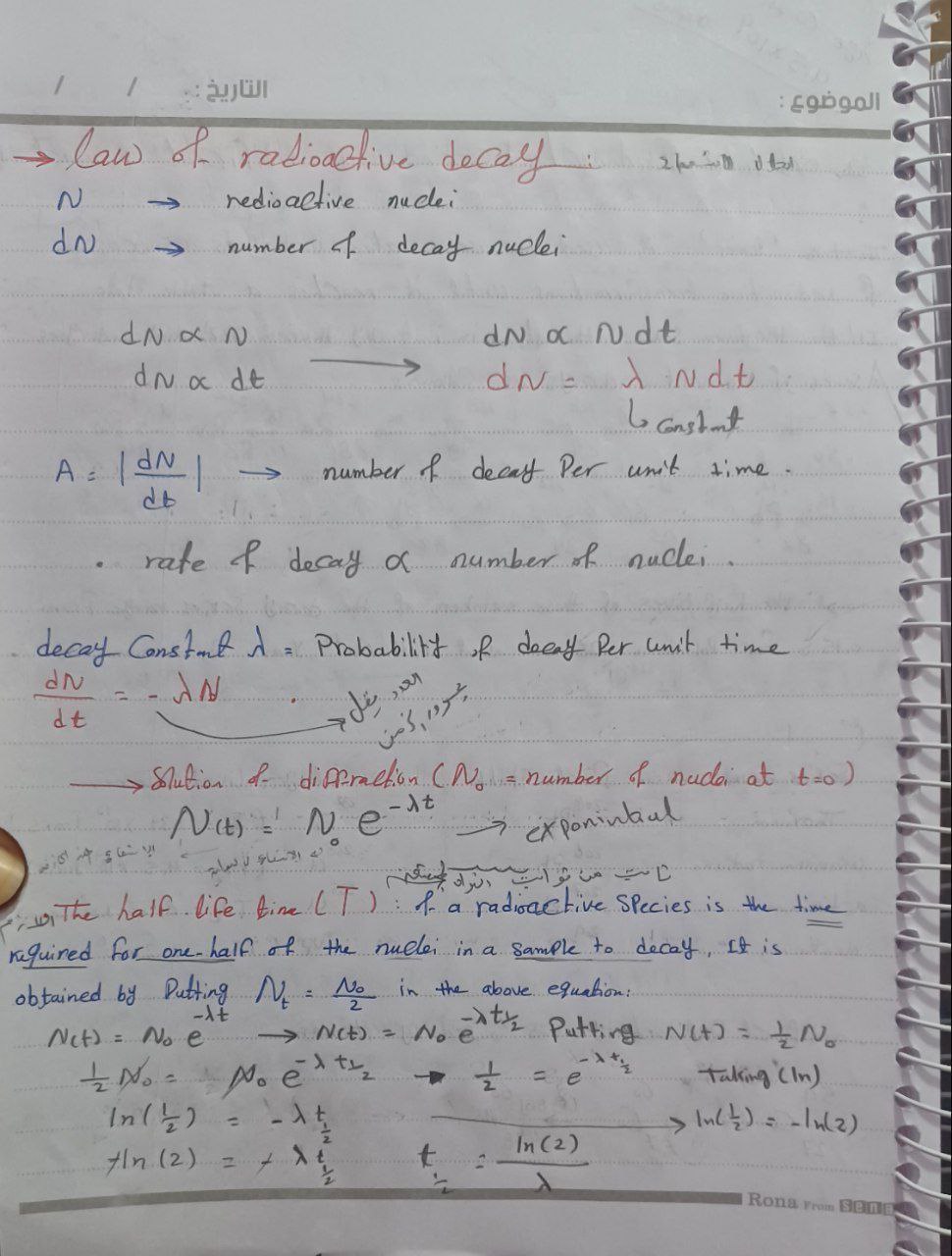What is the law of radioactive decay and how is it mathematically represented?

Understand the Problem
The question is discussing the law of radioactive decay and explaining related concepts such as the decay constant, rate of decay, and half-life of radioactive substances. It includes mathematical formulations and derivations associated with these concepts.
Answer
The law is dN/dt = -λN, and N(t) = N0 * e^(-λt); T = ln(2)/λ.
The law of radioactive decay is mathematically represented as dN/dt = -λN. The number of nuclei at time t is given by N(t) = N0 * e^(-λt). The half-life (T) is T = ln(2)/λ.
Answer for screen readers
The law of radioactive decay is mathematically represented as dN/dt = -λN. The number of nuclei at time t is given by N(t) = N0 * e^(-λt). The half-life (T) is T = ln(2)/λ.
More Information
Radioactive decay involves the transformation of an unstable atomic nucleus into a more stable form, accompanied by the emission of particles or electromagnetic waves. The decay constant λ determines the rate of this process.
Tips
A common mistake is to confuse the decay constant λ with the half-life T. Remember, they are related but not the same.
Sources
- 10.4: Radioactive Decay - Physics LibreTexts - phys.libretexts.org
- Radioactive Decay | Formula, Types & Examples - Lesson - Study.com - study.com
- Radioactive Decay - Wikipedia - en.wikipedia.org
AI-generated content may contain errors. Please verify critical information